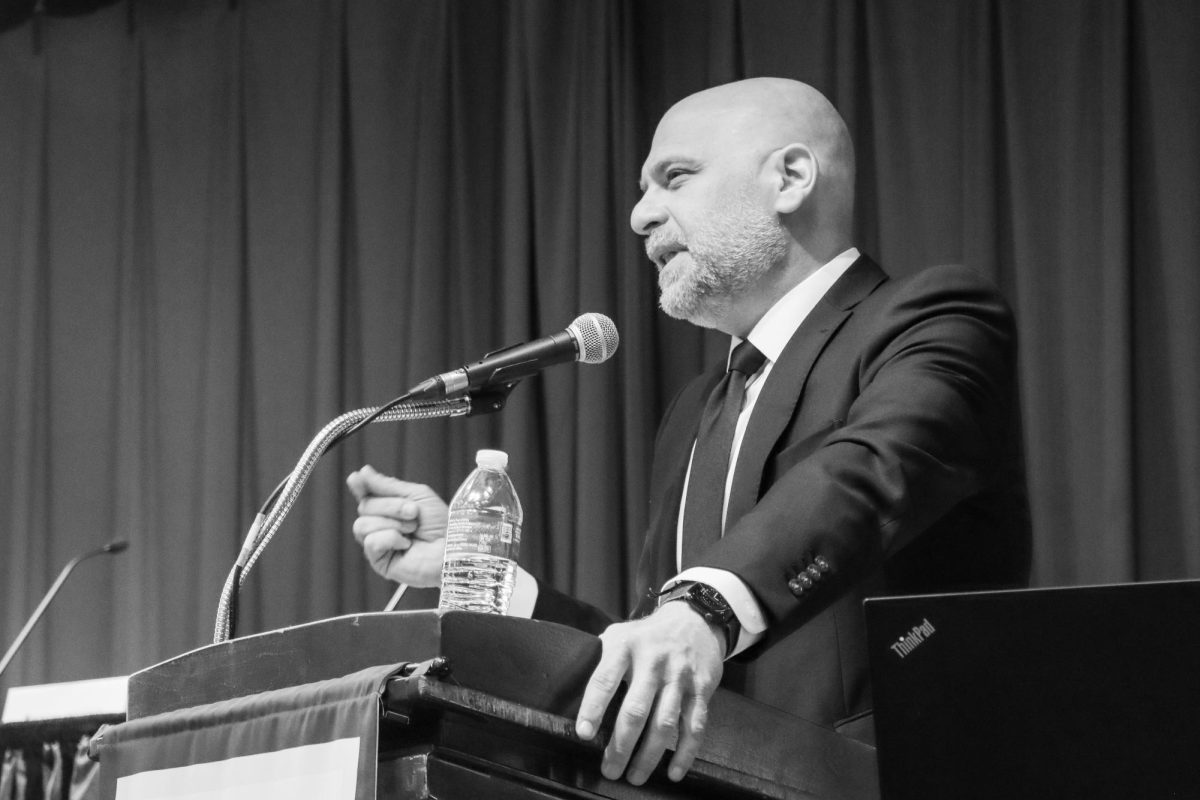By Danny NikanderStaff writer
On Nov. 5, the American Society of Quality (ASQ) presented the 2015 Fall Symposium: Data Analytics in Healthcare at Hofstra. ASQ is a global organization that collaborates on innovative ways to improve the world.
The first speaker was Yin Aphinyanaphongs, a research assistant professor at the Department of Population Health at the NYU School of Medicine, as well as head of the Evidence Based Medicine, Information Retrieval and Scientometrics Lab at the Center for Health Informatics and Bioinformatics also at NYU.
Aphinyanaphongs’s presentation focused on how analytic data could be used in studying disease and medicine.
One of his examples was about autism and how there are potential subtypes to the disorder. This includes people with autism that are more prone to seizures and also those who are more prone to mental disorders.
According to Aphinyanaphongs, researchers discovered the subtypes through the International Classification of Diseases 9th Edition (ICD-9) which, according to American College of Emergency Physicians, is “a set of codes used by physicians, hospitals and allied health workers to indicate diagnosis for all patient encounters.” They then use this data to look for patterns in autism cases, thus giving them more insight to the disorder.
Aphinyanaphongs said that this type of research is more for informative and descriptive purposes, so there is no definitive use for it yet.
Another example Aphinyanaphongs presented was about the use of social media and internet technology to gather analytic data.
He referenced a study done on New Years Eve where researchers were able to follow posts on Twitter to determine how many people in New York City were consuming alcohol. The point of a study like this would be to locate where a large amount of people are drinking and to run drunk driving campaigns in that specific area.
The second speaker of the symposium was Yi-Chin Lin, who is an assistant professor of information systems and business analytics at Hofstra.
“I learned a lot, it was very interesting she made me want to look into data analytics more,” said Danielle Baran, a junior business management major.
The first part of her presentation focused on healthcare delivery and how the process could be more efficient for patients and consumers.
“The cost of healthcare in the U.S. is much higher than other countries,” said Lin, before displaying a chart that showed the U.S. cost of healthcare is twice the worldwide average. Lin said that this was due to the high cost of healthcare delivery, being 71 percent of the total healthcare costs.
In her research, Lin and her team used RFID technology to study ambulatory care, which essentially entails a typical patient going to a doctor’s office for an appointment. RFID, or Radio Frequency Identification, is a process that collects detailed movement of people to improve efficiency in a way that doesn’t infringe on a person’s privacy.
Patients, doctors and doctor assistants all wore tags that monitored where they were in the doctor’s office. The RFID feed generates the time and location of each person which would give how long a patient waited or talked to doctors in things like the waiting room or exam room. The doctor’s office was observed for nine days through 389 patient visits.
The technique was created to imitate the process of patient visits. They evaluated outcomes of certain decisions, while taking uncertainties into consideration, and were able to create charts and graphs that reflected these decisions.
The second part of Lin’s presentation regarded an app that she and her team created to promote healthy eating. She talked about difficulties in existing diet apps like efficient dietary tracking, professional support and peer support.
Lin’s app has the user take a picture of their meal, which would then be sent to a professional who could evaluate the meal depending on the needs of the user. In addition, users are able to connect with other users on social media regarding their dietary needs.
“[The app] is stronger glue to help connect health care users to healthcare providers,” said Lin.
“It was interesting that they tagged people in their entrance times to see the efficiency,” said senior IT and marketing major Valeria Camargo. “It was also interesting how they find different ways to tackle any problem with data analytics.”
Categories:
Symposium discusses data analytics in healthcare
Hofstra Chronicle
•
November 11, 2015
Donate to The Hofstra Chronicle
$250
$945
Contributed
Our Goal
Your donation will support the student journalists of Hofstra University. Your contribution will allow us to purchase equipment and cover our annual website hosting costs.
More to Discover






